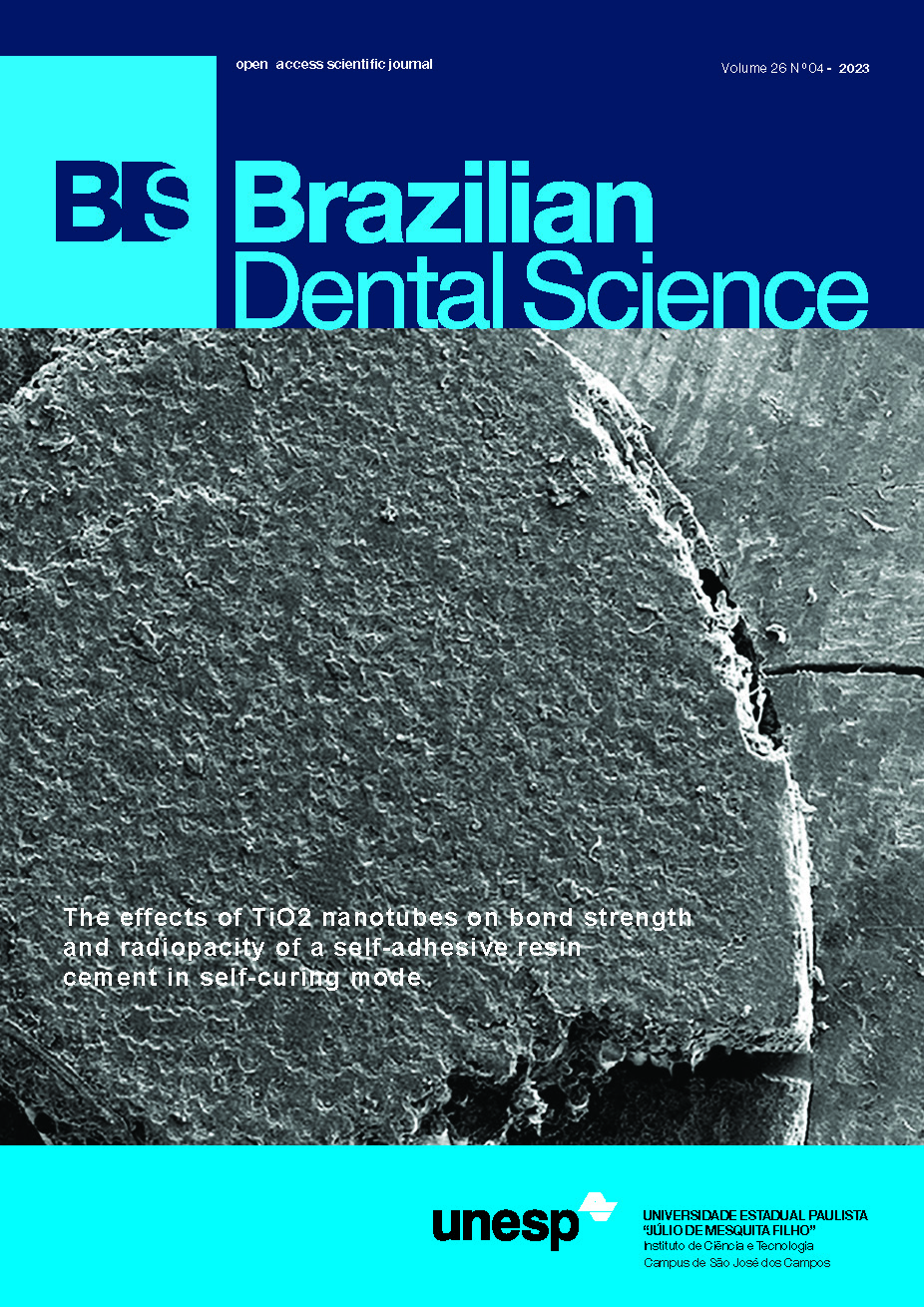Influence of two natural cross-linkers on microtensile bond strength durability – An in vitro study
DOI:
https://doi.org/10.4322/bds.2023.e3869Abstract
Objective: to investigate the effect of two natural cross-linkers on microtensile bond strength (microTBS) and evaluate their influence on the durability of the resin dentin bonds. Material and Methods: the Moringa oleifera and Centella asiatica plant extracts were qualitatively tested with high-performance thin layer chromatography (HPTLC) for the presence of phenols. The phenolic content ranged from 27 to 30 gallic acid equivalents (GAE), microg/mg of dry weight. After etching, two concentrations (5% and 1%) of these two extracts were prepared and used as pretreatment liners on dentin. They were applied for a min. After restoration with resin composite, dentin resin beams were prepared. The study groups were 5% Moringa, 1% Moringa 5% Centella 1% Centella, and control (without cross-linker application). For each group, half of the samples underwent microTBS testing after 24 hours, while the remaining half were immersed in artificial saliva to assess the bond’s longevity after 6 months of ageing. Statistical analysis was performed using one-way ANOVA followed by Tukey’s post hoc test. Results: both 5% and 1% Moringa showed a significant difference (p<0.05) compared to the other groups at both intervals. However, after ageing, the specimens in the control and 1% Centella groups resulted in a significant decrease in microTBS. Conclusion: overall, both concentrations of Moringa (5% and 1%) were effective in stabilising the bond during both intervals.
KEYWORDS
Collagenase; Endopeptidases; Matrix metalloproteinase; Moringa; Phenols.
Downloads
Published
How to Cite
Issue
Section
License
Brazilian Dental Science uses the Creative Commons (CC-BY 4.0) license, thus preserving the integrity of articles in an open access environment. The journal allows the author to retain publishing rights without restrictions.
=================




























